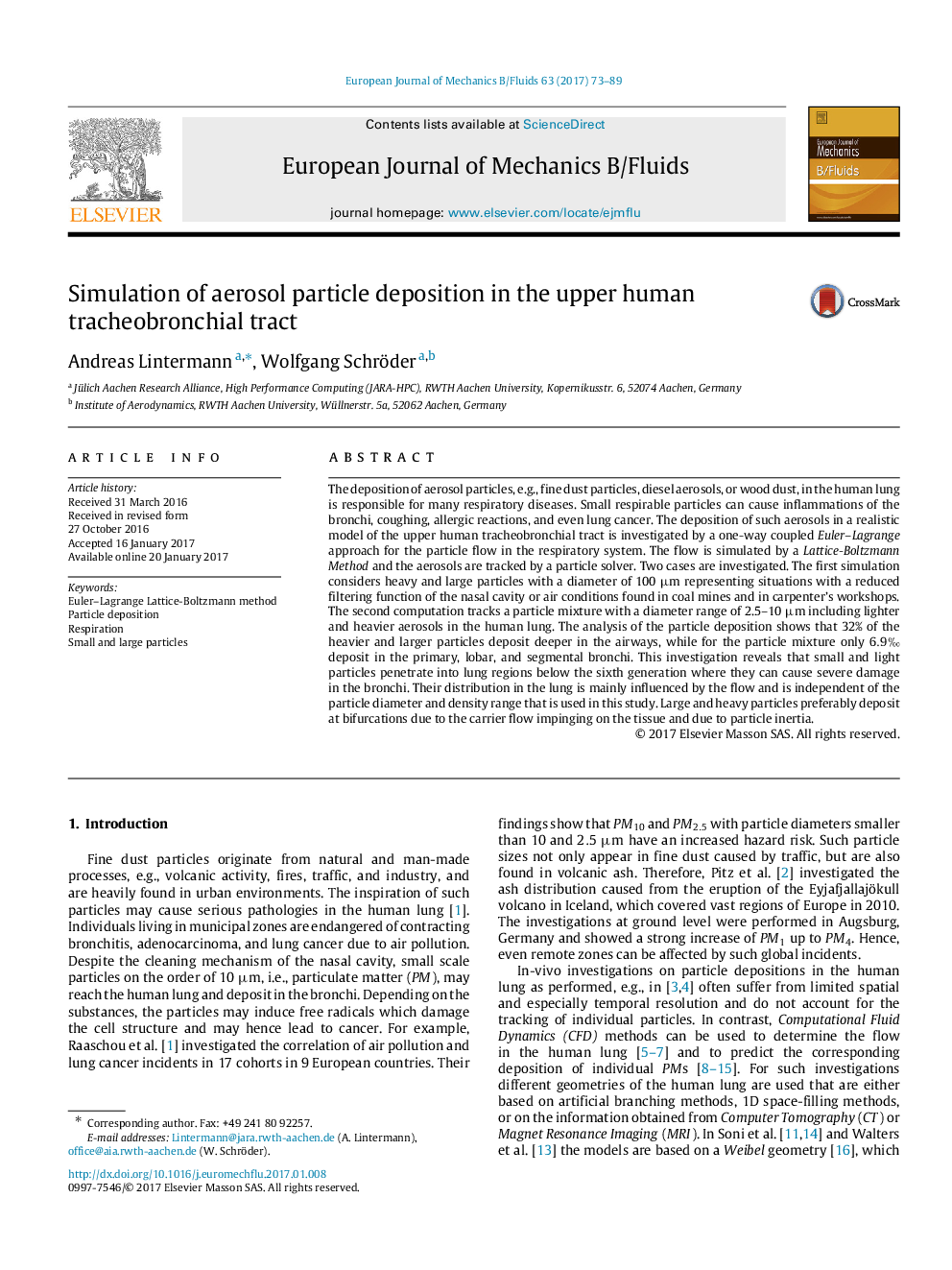| Article ID | Journal | Published Year | Pages | File Type |
|---|---|---|---|---|
| 4992348 | European Journal of Mechanics - B/Fluids | 2017 | 17 Pages |
Abstract
The deposition of aerosol particles, e.g., fine dust particles, diesel aerosols, or wood dust, in the human lung is responsible for many respiratory diseases. Small respirable particles can cause inflammations of the bronchi, coughing, allergic reactions, and even lung cancer. The deposition of such aerosols in a realistic model of the upper human tracheobronchial tract is investigated by a one-way coupled Euler-Lagrange approach for the particle flow in the respiratory system. The flow is simulated by a Lattice-Boltzmann Method and the aerosols are tracked by a particle solver. Two cases are investigated. The first simulation considers heavy and large particles with a diameter of 100μm representing situations with a reduced filtering function of the nasal cavity or air conditions found in coal mines and in carpenter's workshops. The second computation tracks a particle mixture with a diameter range of 2.5-10μm including lighter and heavier aerosols in the human lung. The analysis of the particle deposition shows that 32% of the heavier and larger particles deposit deeper in the airways, while for the particle mixture only 6.9Ⱐdeposit in the primary, lobar, and segmental bronchi. This investigation reveals that small and light particles penetrate into lung regions below the sixth generation where they can cause severe damage in the bronchi. Their distribution in the lung is mainly influenced by the flow and is independent of the particle diameter and density range that is used in this study. Large and heavy particles preferably deposit at bifurcations due to the carrier flow impinging on the tissue and due to particle inertia.
Keywords
Related Topics
Physical Sciences and Engineering
Chemical Engineering
Fluid Flow and Transfer Processes
Authors
Andreas Lintermann, Wolfgang Schröder,
